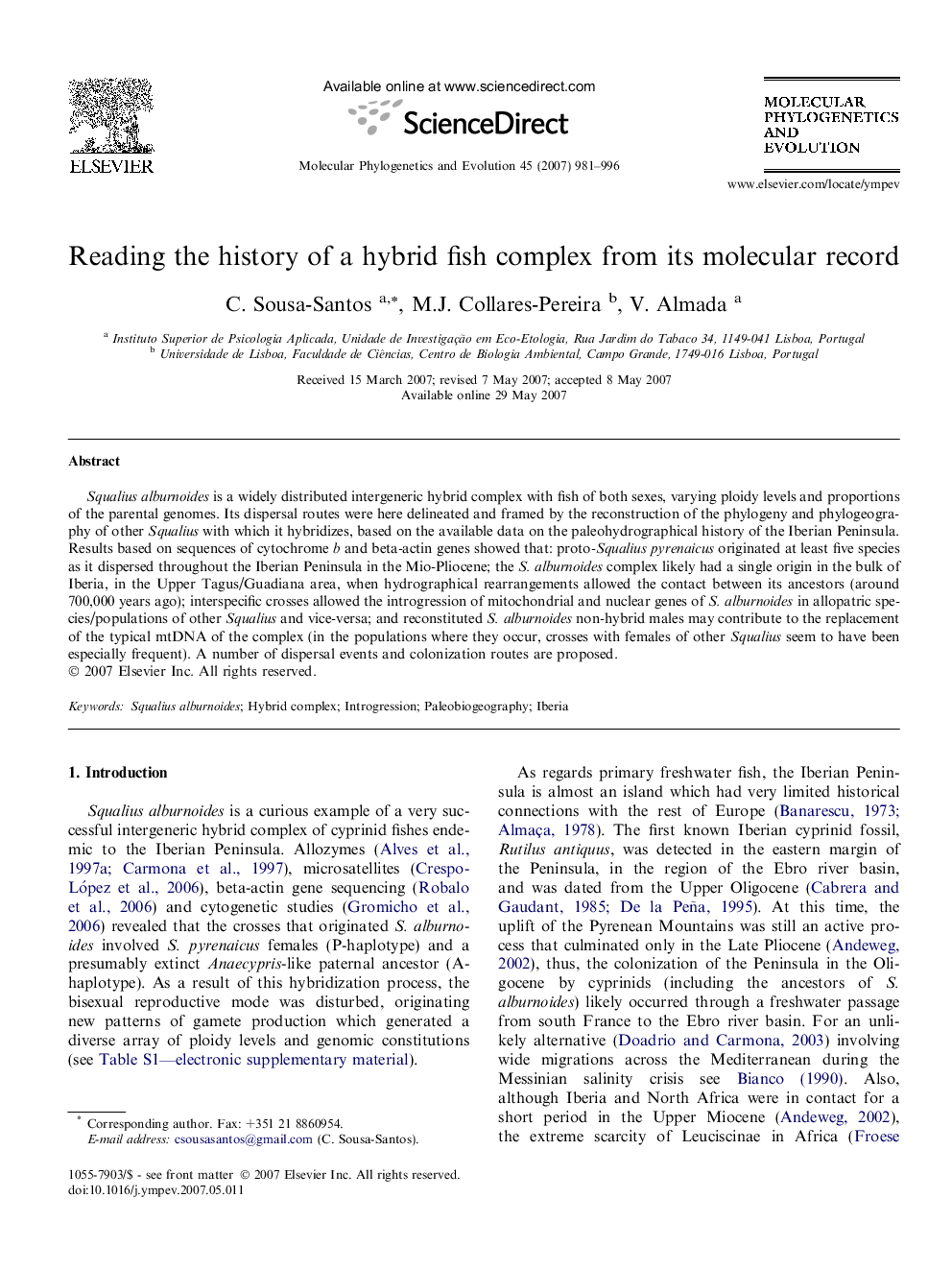| Article ID | Journal | Published Year | Pages | File Type |
|---|---|---|---|---|
| 2835658 | Molecular Phylogenetics and Evolution | 2007 | 16 Pages |
Squalius alburnoides is a widely distributed intergeneric hybrid complex with fish of both sexes, varying ploidy levels and proportions of the parental genomes. Its dispersal routes were here delineated and framed by the reconstruction of the phylogeny and phylogeography of other Squalius with which it hybridizes, based on the available data on the paleohydrographical history of the Iberian Peninsula. Results based on sequences of cytochrome b and beta-actin genes showed that: proto-Squalius pyrenaicus originated at least five species as it dispersed throughout the Iberian Peninsula in the Mio-Pliocene; the S. alburnoides complex likely had a single origin in the bulk of Iberia, in the Upper Tagus/Guadiana area, when hydrographical rearrangements allowed the contact between its ancestors (around 700,000 years ago); interspecific crosses allowed the introgression of mitochondrial and nuclear genes of S. alburnoides in allopatric species/populations of other Squalius and vice-versa; and reconstituted S. alburnoides non-hybrid males may contribute to the replacement of the typical mtDNA of the complex (in the populations where they occur, crosses with females of other Squalius seem to have been especially frequent). A number of dispersal events and colonization routes are proposed.
